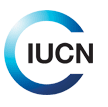A methodology published by the International Union for Conservation of Nature (IUCN), and developed in partnership with the World Resources Institute (WRI), offers guidance to countries for assessing their potential for land restoration, in light of the 2011 Bonn Challenge to restore 150 million hectares of degraded and deforested lands by 2020.
The methodology is presented in a handbook on the Restoration Opportunities Assessment Methodology (ROAM), to help countries identify where and how much of their land can be restored, and determine where restoration carries the most societal value.
 21 March 2014: A methodology published by the International Union for Conservation of Nature (IUCN), and developed in partnership with the World Resources Institute (WRI), offers guidance to countries for assessing their potential for land restoration, in light of the 2011 Bonn Challenge to restore 150 million hectares of degraded and deforested lands by 2020. The methodology is presented in a handbook on the Restoration Opportunities Assessment Methodology (ROAM), to help countries identify where and how much of their land can be restored, and determine where restoration carries the most societal value.
21 March 2014: A methodology published by the International Union for Conservation of Nature (IUCN), and developed in partnership with the World Resources Institute (WRI), offers guidance to countries for assessing their potential for land restoration, in light of the 2011 Bonn Challenge to restore 150 million hectares of degraded and deforested lands by 2020. The methodology is presented in a handbook on the Restoration Opportunities Assessment Methodology (ROAM), to help countries identify where and how much of their land can be restored, and determine where restoration carries the most societal value.
The handbook, released on the International Day of Forests under the title ‘Assessing forest landscape restoration opportunities at the national level – A guide to the Restoration Opportunities Assessment Methodology,’ presents tools that IUCN Director-General, Julia Marton-Lefèvre says are needed to “move from aspiration to action.” She said the handbook can advance restoration on the world’s two billion hectares of deforested or degraded lands by helping countries to decide “where the priority landscapes are, what the best mix of restoration interventions will be, and who will bear the costs – and reap the many gains – of long-term restoration and stewardship.”
The guide is designed to assist a small team of core experts to conduct the analysis in collaboration with other experts and stakeholders to produce the following products: identification of priority areas for restoration; shortlist of the most relevant and feasible restoration intervention types across the assessment area; quantified costs and benefits of each intervention type; estimated values of additional carbon sequestered by these intervention types; analysis of the finance and investment options for restoration in the assessment area; and diagnostic of “restoration readiness” and strategies for addressing major policy and institutional bottlenecks. [IUCN Press Release] [IUCN ROAM Website] [Publication: Assessing Forest Landscape Restoration Opportunities at the National Level]